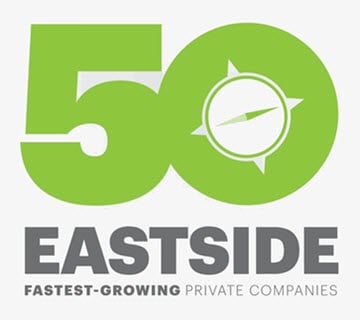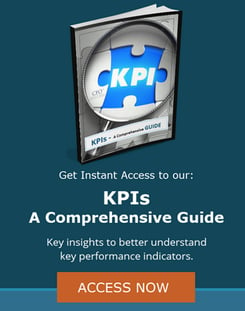
The adage says, “cash is King,” and this could not ring any truer for small and mid-sized businesses. Cash is a crucial component of any successful business, especially startups and new ventures.
Cash flow is the lifeblood of organizational success.
Positive cash flow leads to profitability and provides the funds needed to reinvest in the future of the business. However, proper cash flow management is difficult for many companies to undertake successfully.
Some businesses fail to analyze cash flow projections appropriately to identify potential shortcomings, while others suffer from mismanagement of payment terms and an inability to collect outstanding payments. New businesses are prone to spend recklessly and make poor inventory choices because they lack the awareness needed to make cash flow-centric decisions. Companies struggling with cash flow management often err on several of these key elements, fueling the vicious cycle of cash flow issues.
Business executives who have problems with cash flow at their organizations (or want to avoid future issues) will benefit from earmarking these cash flow tips:
- Prepare Cash Flow Projections
Executives are accustomed to planning for future initiatives, but many fail to plan for cash flow.
Cash flow projections are as important as sales projections, company-wide financial forecasts, and broader industry insights. Cash flow projections address the question of whether cash will be available to fund the business’s continued growth and help to identify potential shortcomings. One key item to remember: cash projections almost never matches revenue projections.
To prepare a cash flow projection, take the value of current cash on hand and factor in customer payment histories and planned significant cash outlays. The result is an indication of what your organization’s cash flow will look like in the immediate future.
FCF (Free Cash Flow) is a metric that illustrates how much cash a company generates after spending the money needed to maintain its existing assets. FCF is calculated by subtracting capital expenditures from operating cash. This snapshot of a company’s cash flow position is a valuable metric to track regularly to identify variations related to business operations.
- Change Payment Terms
Setting payment terms to make them more favorable for your business is the smartest way to improve cash flow. The goal is to get paid by customers as quickly as possible while waiting to pay suppliers. For instance, requiring that customers pay on NET30 terms while simultaneously paying vendors on NET60 terms creates a 30-day cash inflow and outflow gap. The gap between receiving payments and making payments provides a positive cash flow situation that your company can exploit to reinvest cash into growing future profits.
- Maintain Cash Reserves
Cash reserves help businesses to weather the storm when unexpected circumstances arise that substantially reduce or eliminate positive cash flow. Setting aside funds for shortfall situations is a shrewd decision that can protect your organization in times of trouble.
Creating a contingency plan is another important step to safeguard against an instance where a shortfall is too large for cash reserves to cover. This kind of crisis is only mitigated with meticulous planning that provides for worst case scenarios.
- Manage Customer Payments
Controlling customer payments is an integral step towards regulating cash flow. Businesses that can get paid efficiently and minimize writing off bad debt will always be in a better cash flow position than businesses that cannot get paid on time.
· Offer discounts to incentivize faster payments
· Require deposits on large orders or lengthy contracts
· Utilize mobile payment solutions to get paid quickly
· Extend credit terms sparingly
· Collect on outstanding payments
Offering special payment terms for your best customers may be important to maintain those relationships; however, doing so at the expense of hurting cash flow is something that should be carefully evaluated.
- Purchase Wisely
New businesses often find it difficult to limit their spending. However, this is the most crucial time to be shrewd with purchases. Businesses that have not yet broken-even must scrutinize purchases more closely than more mature companies.
Businesses at all life stages must make wise CAPEX investments to ensure that they will generate positive cash flow in a reasonable timeframe. Otherwise, a company can end up with an imbalance between short-term and long-term assets, limiting liquidity.
Depending on the nature of the business, leasing instead of purchasing equipment may be a better solution. Delaying capital investments is a clever way to avoid substantial cash flow fluctuations, but this strategy may not make sense over the lifetime of the business. Doing a full cost analysis of buying outright versus leasing helps to identify the best solution for your business.
Another major expense that businesses carry is payroll, which is why smart hiring is so important. Over-hiring can tie up business resources, negatively affecting cash flow without contributing proportionally to profitability.
- Eliminate Obsolete Inventory
Sinking cash into excessive inventory purchases is the biggest mistake that companies across all industries make. Keeping inventory levels low allows for maximum cash flow, while still enabling the business to operate normally. Effective sales forecasting aids in making reasonable inventory purchases to improve cash flow.
Any existing obsolete or excess inventory should be eliminated to avoid tying up assets. Selling this unusable inventory off (even if it is well below market value) provides an infusion of cash that otherwise would not exist while inventory sits unsold.
- Stop Focusing exclusively on Profits
Business owners and executives who are blinded by the need for profitability may be unable to fully make a personal investment in creating positive cash flow. A strong emphasis solely on profits can result in decision-making that hinders cash flow, whereas a focus on cash flow will ultimately lead to sustainable profitability.
Since cash flow is responsible for generating profitability, a strong cash flow-centric focus is essential for creating dividends and driving future growth.
- Invoicing: Timely and Consistent
“Businesses are not sales organizations, so much as they are invoicing organizations.”
The first known use of the term “invoice” occurred in 1560. It is a modification of Middle French – the plural version of which means “dispatch of goods.” There are several different types of invoices businesses can create.
The most common invoices used are:
> Proposal/Bid/Pro Forma. An expectation of how much a business is going to charge for goods or services. As opposed to a bill, this is a preliminary appraisal.
> Interim Invoice. Invoices that are sent out weekly or monthly during a long-term project.
> Recurring Invoices. Used for recurring customers. E-invoicing can automate these invoices.
> Past Due Invoices. Sent when an account is past due. Includes original invoice and interest accrued.
> Final Invoice. An invoice that is sent out following the completion of a project.
How often should a client be invoiced? There is not a one-size-fits-all method or timeframe for invoicing since circumstances vary. A consultant may send more invoices more frequently than a small business with a major client. Here are suggestions for invoicing:
> Adding a company logo to your invoice increases the likelihood of being paid.
> Include a due date on the invoice. This may seem like commonsense, but many miss this important detail. The due date should be apparent.
> Including “terms” on your invoice improves timely payment.
> If the invoice is directed to more than four people, it may be opened but there is less likelihood that someone will claim responsibility and pay it.
There are resources with more ideas and ‘rules’ for invoicing. If you don’t invoice efficiently, you can’t manage cash effectively. The team of CFOS and Controllers at CFO Selections would be happy to help you improve cash flow and evaluate your invoicing.
Learn more about how we can help your business make cash flow-centric decisions. Our experts are seasoned industry veterans that have the expertise needed to create positive cash flow in your organization while building its future. We look forward to your contact here >






